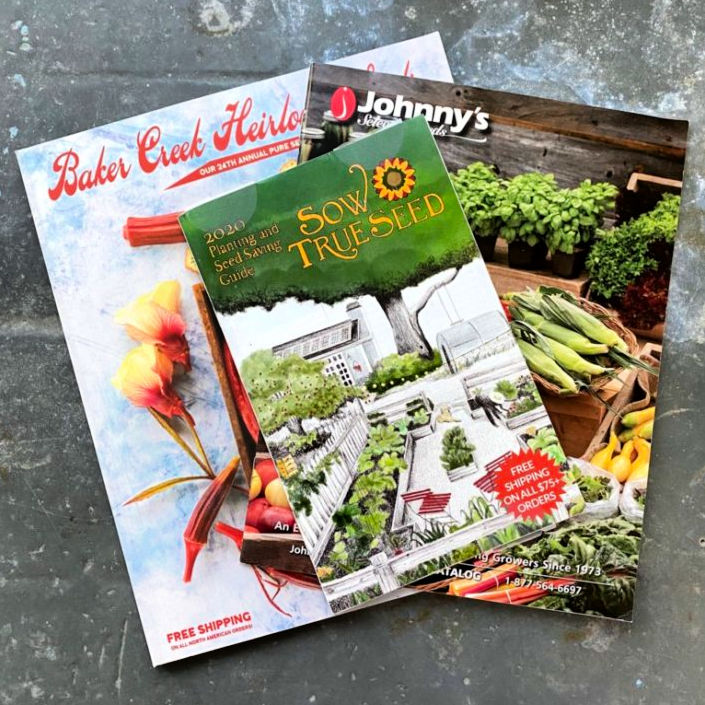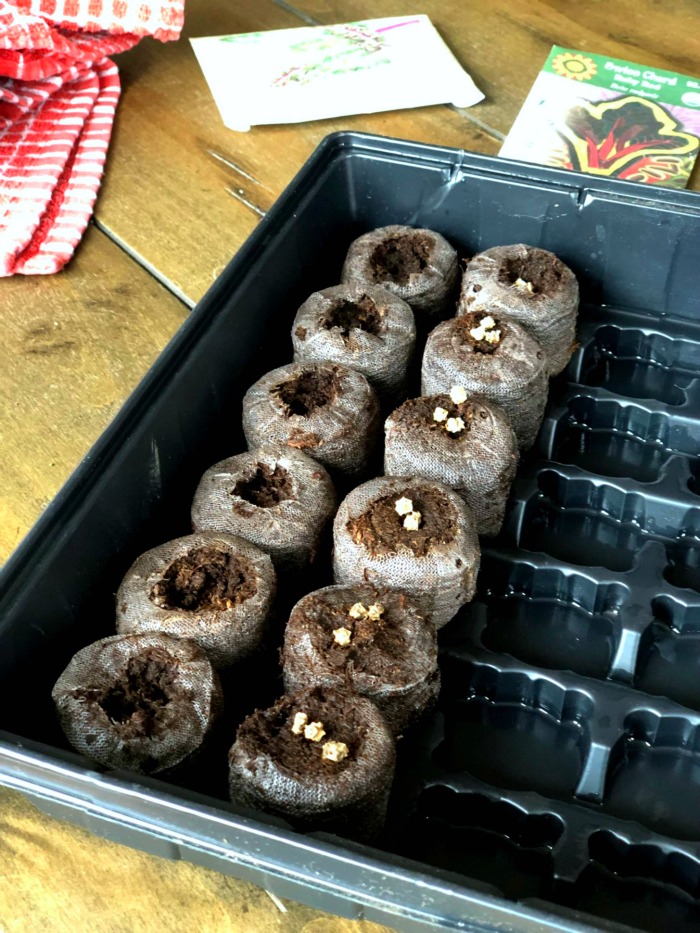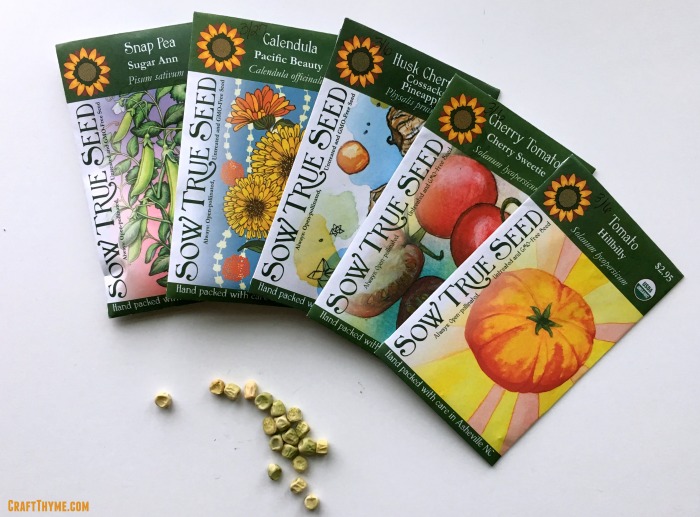
Ordering seeds for your garden is one of the most exciting ways to find new varieties of plants you wouldn’t be able to simply get as starts nearby. But ordering seeds, especially heirloom seeds, can be overwhelming. Below we will go over the differences in heirloom, organic, open pollinated, and other seed types. As well as what factors you should consider when picking a seed company to place orders with. We have marked our top eight companies for ordering heirloom seeds so you can figure out the best place to order seeds for you and tips for making those seeds last. Finally, we have a comprehensive list of the best places throughout the United States to order heirloom, organic, and open pollinated seed. Spoiler: We are NOT affiliated with any of these companies except one. We have just spent years ordering and trialing seeds.

What Is The Difference Between Heirloom, Organic, and other seed types?
When you begin looking through seed catalogs and ordering seeds you may see a lot of different terms. It is going to be hard to select your particular best place to order seeds unless you know what type of seed you want to order. Let’s go over a few of these and explain that when ordering heirloom seeds not all definitions are the same.
- Open Pollinated Seed: Open pollinated seeds are sees that when you grow a plant you can then save the same seeds off that plant and have it come out like its mother plant. For example, if you grow an “Amish Paste” variety of tomato and save seed from those tomatoes than you should come out with an “Amish Paste” tomato the next year. Please Note: There is a lot more that has to occur to save true seed, but being open pollinated versus hybrid seed is the start.
- Heirloom Seed: All heirloom seeds are open pollinated and non-GMO by their very nature. There is no exact definition of what makes something an heirloom, but generally it means the seed is open pollinated, and saved seed varieties that originated BEFORE World War II. However, I will often see heirloom added to any open pollinated seed regardless of how long the variety has been in existence.
- Non-GMO Seed: Labelling a seed non-gmo means that it has not been genetically modified in a lab. Most varieties of seed have been genetically modified by careful selection in a garden over many years, so non-GMO speaks specifically to not have genes altered or added directly through gene modification techniques. FUN FACT you should NOT be able to order GMO seed for non-commercial operations. That being said, there is a real problem with GMO drift. Corn is one of the worst culprits for accidently having GMO genes passed on. If this is an important issue to you as a garden you will want to buy seed that is non-GMO Certified. They will have tested a certain sample of the seed to make sure it didn’t accidently end up with GMO traits.
- Hybrid Seed: Hybrid seeds sometimes get bad rap because they aren’t “pure”. Hybrid seeds come from crossing two very specific and different parent varieties to create a plant that has different characteristics than the parent plants. The drawbacks are if you save seed from hybrid plants you probably won’t get the same plant you started with. But I don’t hate on hybrids. Hybrids can offer a lot of cool properties like disease resistance or high yield that you might not be able to get out of an open pollinated type. Also, many folks aren’t equipped to both grow in a small garden and meet the necessary rules for pure seed saving (like distance). So if you aren’t set on saving a particular seed, then give hybrids a look. They can be particularly good for new gardeners as many hybrids are grown to be a bit tougher than their open pollinated cousins.
- Organic Seed: Organic seeds can be hybrid or open pollinated seed types BUT heirloom and open pollinated seeds do NOT have to be organic. The organic label means the parent plants of the seeds had to be grown in organic certified conditions. I’ll save my rather negative opinion of the organic certification process for another post :). It is ONE method to insure you start with seed that hasn’t been around non-organic pesticide. But I personally think finding a reputable seed supplier who follows your ethics is probably a better indication.
- Pelleted Seed: This is seed that has been coated in… something. The purpose is to make smaller seed larger and more uniform in size for easier sowing (via hand or seeder). Depending on the seed type they may use clay or some other ‘seed safe’ coating. Pelleted seed is great for carrots but it is often hard to find for heirloom varieties.

What To Look For When Ordering Heirloom Seeds?
Spoiler: There isn’t going to one BEST place to order heirloom and organic seeds. But there is going to be one or two best places for you specifically to order seeds. To figure that out you need to understand what seed type you want to order (above) and some other factors.
- Cost: Unless you are Richey McRichison cost is going to be a factor. Specialty seeds aren’t cheap. Organic designation can add to the cost. Some companies like to work with farmers or resellers and give good discounts to bulk orders. Which leads to our next consideration–>
- Scale: Are you going to be a small hobby gardener or scale to market? Maybe even full time agriculture. Seed sellers generally cater to large or small scale. However, there are a few vendors that sell to both.
- Location, Location, Location: One of the joys of buying heirloom seed is that it has been saved over many years. Which means varieties can often acclimate to a particular region. Finding a seed source near your area can often mean less work as a gardener. The varieties will be used to your weather and pests with natural defenses for both.
- Variety: One of the joys of buying heirloom seed is getting something not found in every store! I like to find seed sellers with enough variety of choice to satisfy my “oooh and awwwweee” factor. But buyer beware, sometimes a more targeted seed seller is going to fully understand the exact varieties they are selling. Their advice and commitment to those varieties can get your garden really going. They have picked things they know are reliable and tasty.
- Seed Health: Let us say it again: GERMINATION RATE. All those fancy peppers I was trialing last year…. 1 whole packet never even germinated. Also open pollinated seeds have to be kept in special conditions in order to make sure the seed you get will grow up like the parent plant. One year all my tomatoes were not what was on the packet. :(. The company refunded all my money when I sent them pictures, but what a waste of a growing season when you end up with some tasteless paste tomato when you really wanted a rich slicing variety
- Mission and Values: A number of heirloom varieties disappeared over the years when hybrid and “easier” vegetables came on the market. There are companies DEVOTED to preserving these varieties. Other companies work with local communities or other charitable activities. I always think it is nice to work with a company doing good things when I can.
Our Top 3 Locations to Order Heirloom Seeds
#1: Sow True Seed: Asheville, NC
- Price: Most packs ~$3.00
- Shipping: Based on exact cost of weight and zip. via USPS.
- Often free order +$49
- Free in-store pickup
- Unknown: International Shipping
- Why we love them: There are sooooo many reasons to love Sow True Seed. My top reason is that they trial the seeds they sell. You know you are going to buy seeds that work well in the Southeastern United States. I have, personally, great germination rates that result in tasty vegetables. They are small, give tons of seeds away for school and community gardens, and are just generally nice people. Over the years their website has evolved to make it easy to order heirloom seeds as well as open pollinated varieties. They also have signed the safe seed pledge so you know they do their utmost to keep clean, non-gmo seed.
- Things to consider: They ship all over the US but their physical location in Asheville, NC is where their focus is involved.
#2: Baker Creek Heirloom Seeds: Mansfield, Missouri
- Price: Most packs ~$3.50-$4.50
- Shipping: North America (Canada, US, Mexico) Free
- They do ship internationally for additional fees.
- Why we love them: Do you need a cucumber that looks like a dragon egg? What about a bean that grows over 4ft long? Cause they will have it. If you want to find unusual varieties from around the world this is the place to go. Added bonus, the yearly catalog might as well be plant porn.
- Things to consider: The seed packets can be really small. Like barely have enough pepper seeds to double plant a small tray (12 peppers?!). The germination can be dubious at best. They do try to mark seed packets with low germination and add more seeds, but that is only after you receive your order. Finally, they are getting varieties from all over the world. It makes them really, really cool but it also means I’ll be trying to grow a blue butterfly pea plant for the 3rd year in a row (Yeah, I don’t give up easily) because it just doesn’t like something about Western North Carolina. Honestly, I would hesitate to base my entire garden on their seeds but I use them as an add-on every single year.
#3: Amazon/Etsy: Who knows?!
- Price: ~$2.00-$5.00
- Shipping: Just depends. We order Prime if we can for free and many Etsy sellers offer free shipping.
- Why we love them: We combined these two as the same because of the key reason we like them. FYI, We are Amazon Affiliates (link above is an affiliate link), but that isn’t the reason we suggest Amazon. Amazon\Etsy can have things you just can’t find anywhere else. Both locations can connect with you with small independent sellers who carry items that you just cannot find other places. I have found that costs can be higher than expected as items get padded in shipping costs
- Things to consider: Amazon and to a lesser extent Etsy are large corporations that are platforms for other sellers. This can be great in giving a small seller a larger online presence, but it can also mean they take a lot of money out of the small seller’s profit. Call it a love-hate relationship with this type of big corporation. Additionally, you rarely know what type of seed you are getting. These aren’t the common seed markets so reviews are limited in some cases, and you are just taking a chance at the quality. I will say though, I have an awesome banana tree I ordered as a teeny tiny plant from Amazon. I also had to throw out a bag of Jerusalem artichokes when I was trying to source bulbs a few years back because they were rotten (Sow True carries these now). I have had some success with seeds, but also have gotten packets of dubious nature when ordering heirloom seeds. Its a buyer beware area.

5 Other Really Awesome Places to Order Heirloom Seeds
Johnny’s Selected Seed: Especially great if you are looking at bulk orders for farming. Their focus is more commercial in nature but they are open for home gardeners ordering heirloom and organic seeds.
Botanical Interests: We picked up a few packs from them on sale at Ace hardware a few years ago and they did wonderfully. Their packets are meant to help new gardeners and are beautiful and informative. Their website has specific areas for organic and heirloom types seeds.
Seed Savers Exchange: I have NOT personally used their seed, but I am familiar with their mission. They are one of the big groups to help preserve heirloom seeds for future use. They also help facilitate seed exchange among seed savers. They are on m to-try list if I ever get past the first five I have listed.
High Mowing Seeds: They are another company I am familiar with but don’t use regularly. The nice thing is being out of Vermont they offer a lot of good varieties for the East Coast of the US. They have also been in the organic seed business a LOOOONNNGGGG time. You know you will be getting real organic seed when you order from them.
Burpee: You may be appalled by our last choice since Burpee is more synonymous with big box gardening than organic and heirlooms, but I stand by them. I like to meet gardeners where they are and not everyone is ready to go hunt down esoteric packs of strange and delightful white tomatoes. (Trust me, you will get there if you get hooked in gardening). Burpee has entire lines of organic and heirloom seeds. Often you can find some of these lines at Lowes, Home Depot, and other big box stores. They focus on lines of seeds that give good consistent results and provide seed that is accessible to a lot more folks. I will often fill my vegetable needs from Burpee seeds and they grow great plants.
Need Even More Options?! See the list at the bottom of the post for even more specialty locations to order heirloom seeds, as well as organic and open pollinated seeds. Please add your favorite seed places in the comments and I will update the list.
How to Keep Your Seeds Organized
Now that you have figured out how to locate the best places to order heirloom seeds don’t forget to keep them organized and safe! People often do not realize you do not need to order $100’s of seeds each year. For a small family a single packet of tomato seeds can generate enough plants for 3-4 growing seasons. There are really three things to keep in mind:
- Keep up with what you order
- Keep them dry, cool, and safe
- Keep up with what you order (It is worth saying twice)
I always THINK I am going to remember what I ordered, what I liked the previous year, etc. I don’t unless I literally MAKE myself. Now, I keep a nice online inventory. I make notes at the end of the year and before I allow myself to order anything new. Added bonus, it is easy to simply hit “share” and let my gardening friends see what extras I have on hand. Here is a handy link to our seed inventory and printable seed saving guide. This can help you keep your heirloom seeds organized and determine when seeds are going out of date so you can plant them accordingly.
Finally, remember to just have fun and enjoy ordering/planting these unusual heirloom seeds. You may not get every seed to become a beautiful plan but it is one of the best ways you can help preserve and taste history!
THE List of Places to Order Heirloom, Organic, and Open Pollinated Seeds
Southeastern US
- Heavenly Seed (SC)
- South Georgia Seed Company (GA)
- Southern Exposure Seed Exchange (VA)
- Sow True Seed (NC)
Northeastern US:
Midwestern US
- Baker Creek Heirloom Seed (MI)
- Good Seed Company (MT)
- Hometown Seeds (UT)
Southwest
- San Diego Seed Company (CA)
- Renee’s Garden (CA)
- Quail Seeds (CA)
- Seeds Trust (CO)
Northwest
- Adaptive Seeds (OR)
- Territorial Seeds (WA)
- Territorial Seed Company (OR)





















